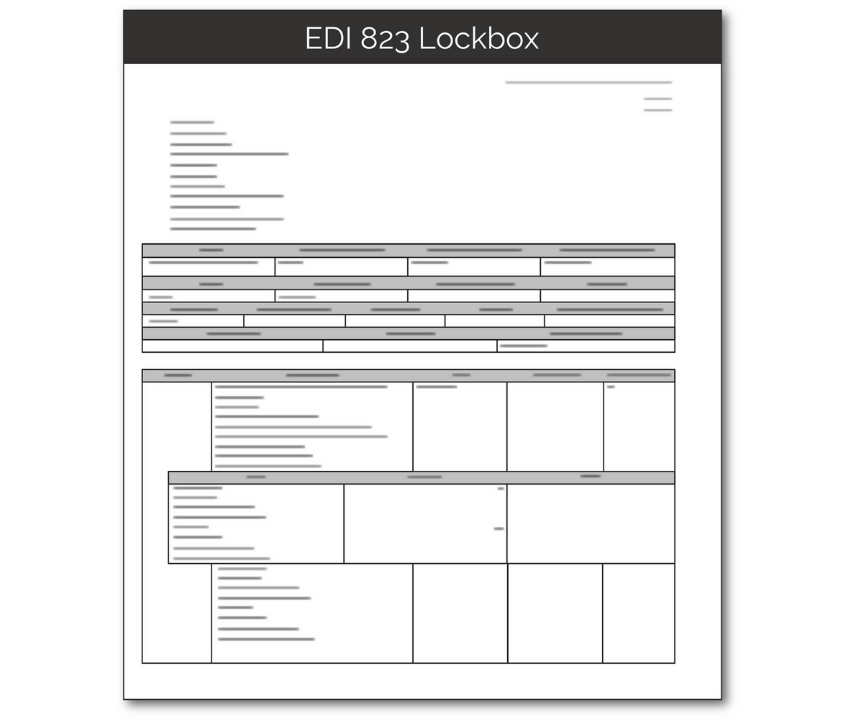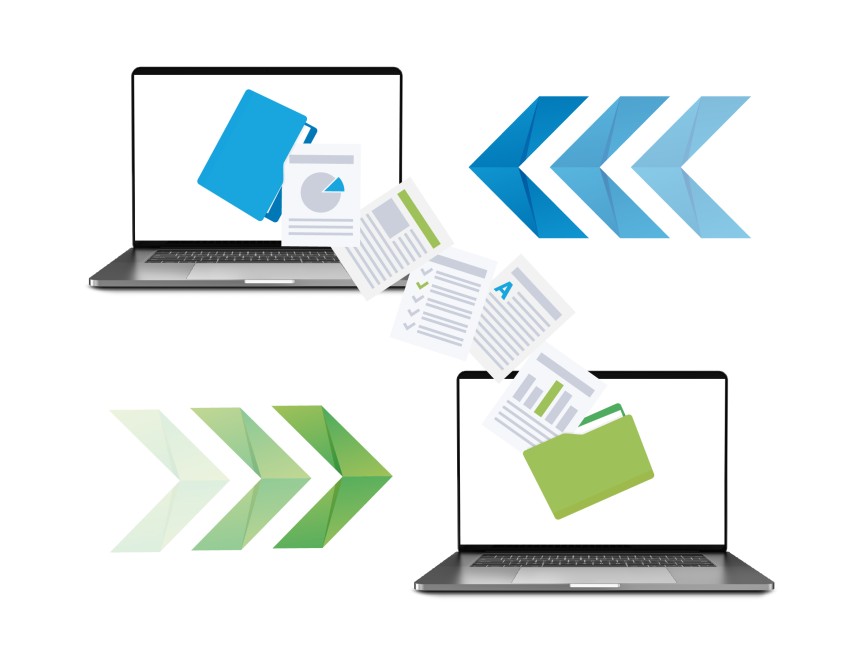EDI 823
Lockbox

What is an EDI 823?
EDI 823, also known as a Lockbox transaction, is an electronic data interchange document used by banks and other lockbox providers. The Lockbox document includes key information on incoming payments, allowing business partners to streamline the payments process.
EDI 823 documents follow the x12 format set by the American National Standards Institute (ANSI), a not-for-profit organization that regulates EDI formats in the U.S.
What are the Essential Components of EDI 823?
As a financial document, EDI 823 needs to include several pieces of information regarding an incoming lockbox payment. Key data elements on the EDI 823 Lockbox include:
- Lockbox service provider identifying information
- Payer and payee information
- Quantity of payments, such as number of cheques
- Check number
- Corresponding order(s) or invoice(s) the payment needs applied to
- Total amount received, in dollars
- Any applicable tax information

How do I Use EDI 823?
Lockbox payments are a popular way for businesses to accept money from B2B orders. Lockbox providers, such as banks, give each business a unique P.O. box, which customers can send payments to. The payments are then collected and deposited by the bank, who sends a Lockbox message to update the account holder.
The EDI 823 Lockbox transaction set is used by the bank to alert sellers to incoming lockbox payments automatically. EDI 823 can contain information about a single payment, or multiple payments. It can be triggered by the arrival or acceptance of a payment, or scheduled to send periodically, such as at the end of each day.
After receiving an EDI 823 transaction, sellers will usually send back an EDI 997 functional acknowledgement.
What are the Benefits of EDI 823?
Lockbox payments make it easy for businesses to accept incoming payments without manually processing them. Using EDI to automate payments updates increases the efficiency of this process, and allows manufacturers, suppliers, and other sellers to keep track of payments without manually checking on each one. This is especially helpful for closing out invoices, and knowing which customers still have an outstanding balance.

Using EDI 823 to transmit and receive these updates further streamlines the payments process. Because EDI 823 can be fully automated, sellers don’t have to waste time with hours of manual data entry. EDI also helps prevent errors, which can cause accounts receivable issues if the Lockbox document doesn’t match other documents, such as the EDI 820 Payment Order/Remittance Advice.
EDI has the added benefit of enhanced security. Unlike emailed or PDF documents, which can easily be hacked, EDI transactions are normally protected by a variety of security protocols. These help keep valuable, sensitive business details (like financial information), safe and confidential.
